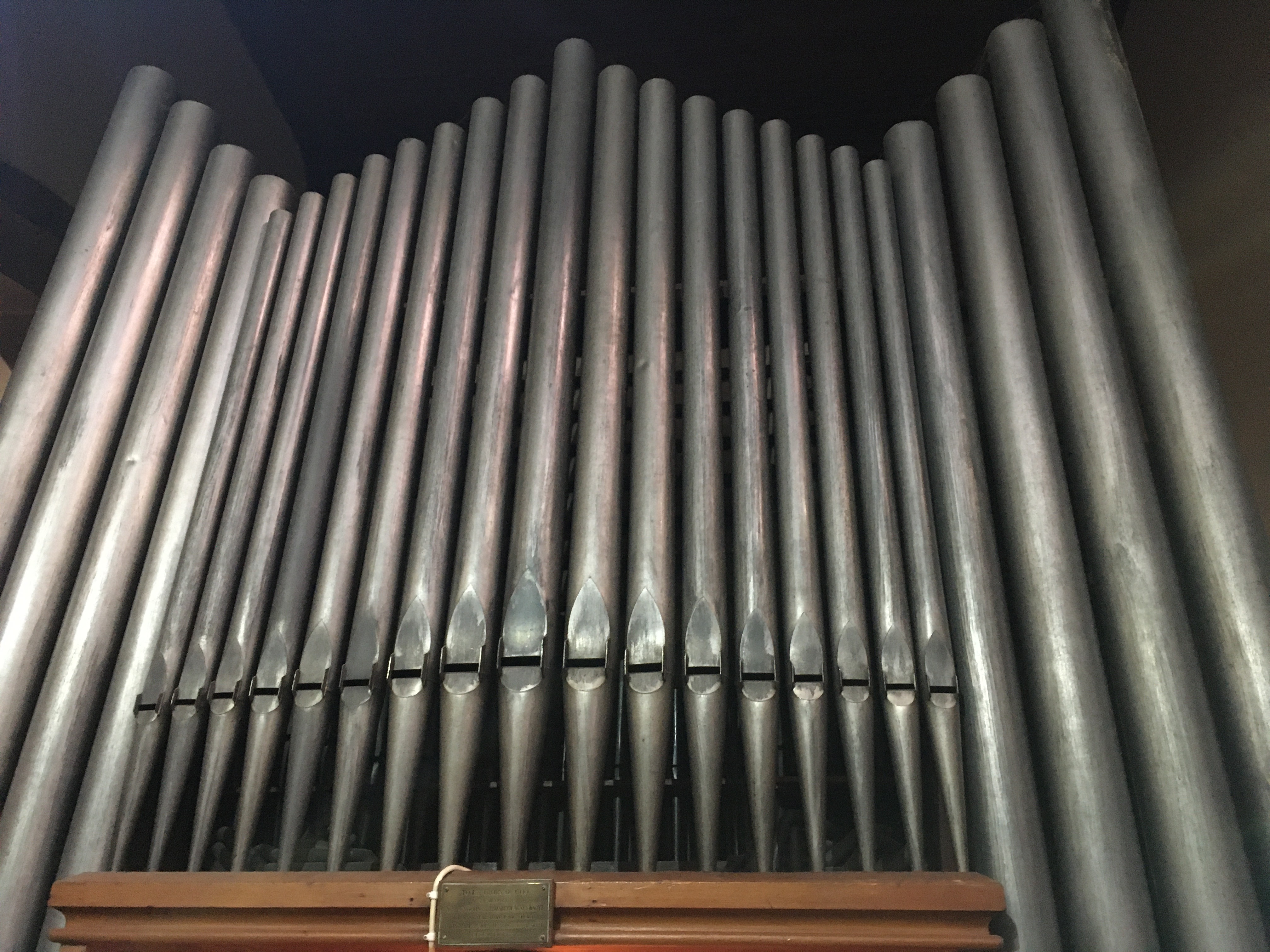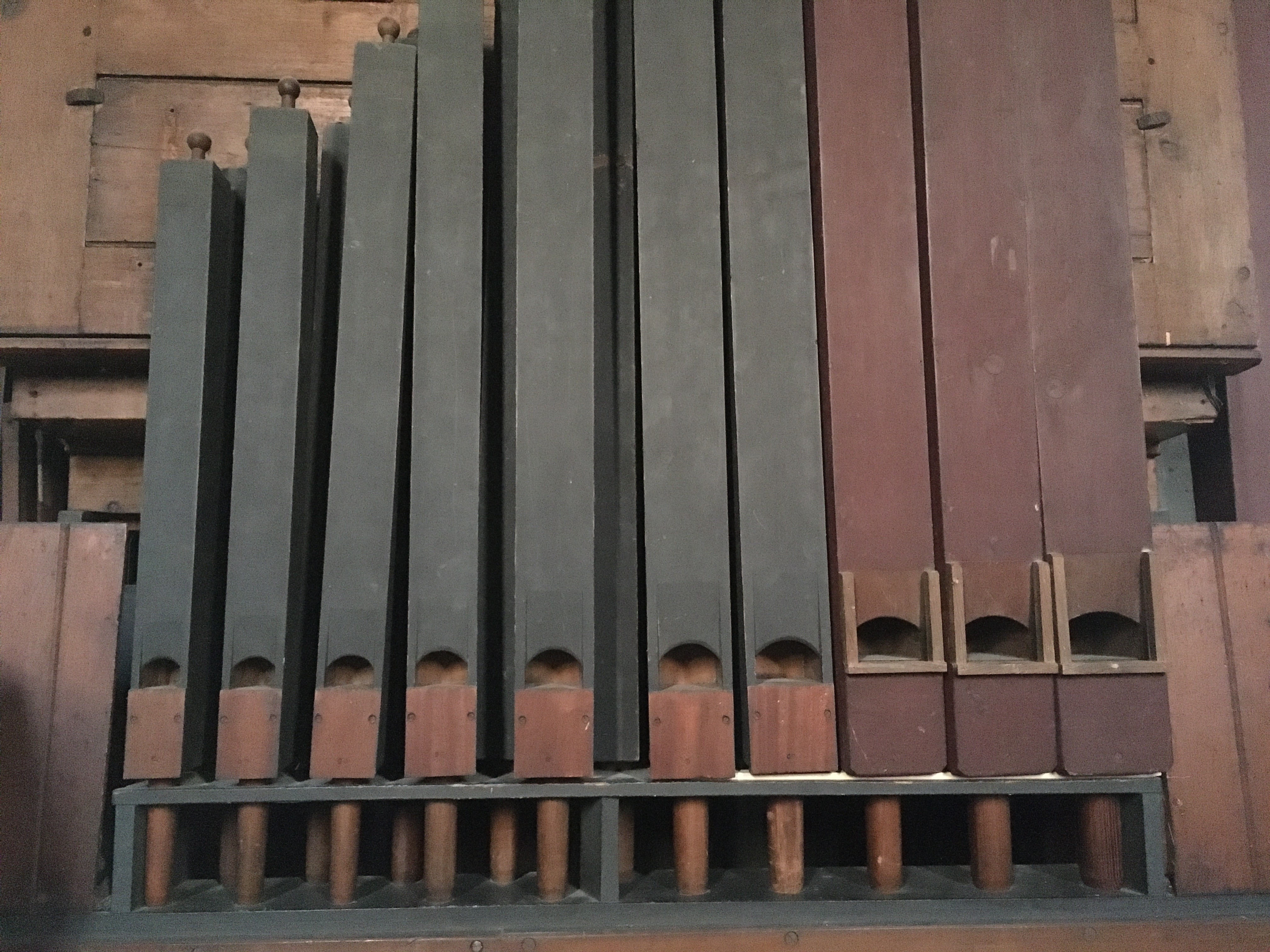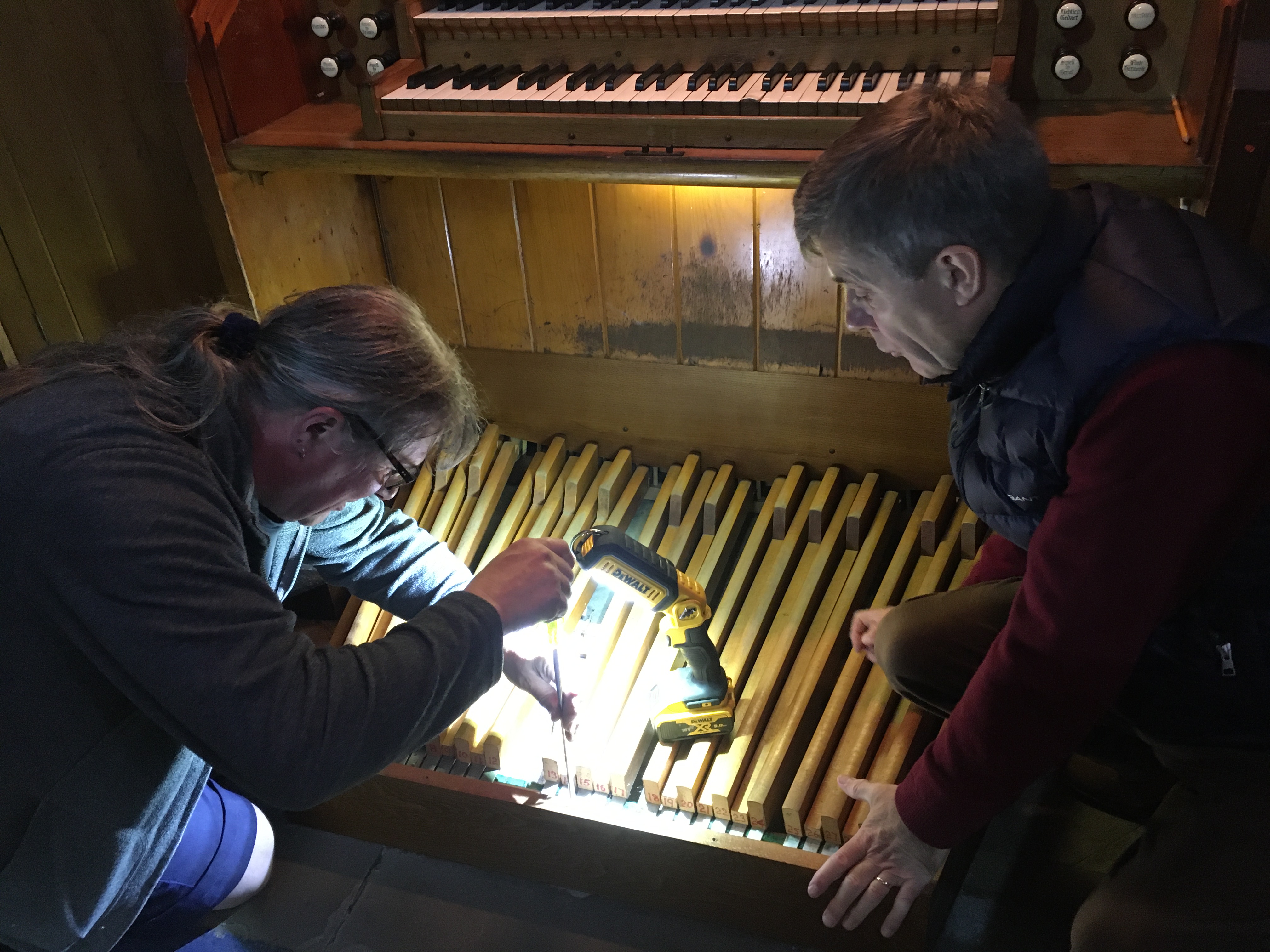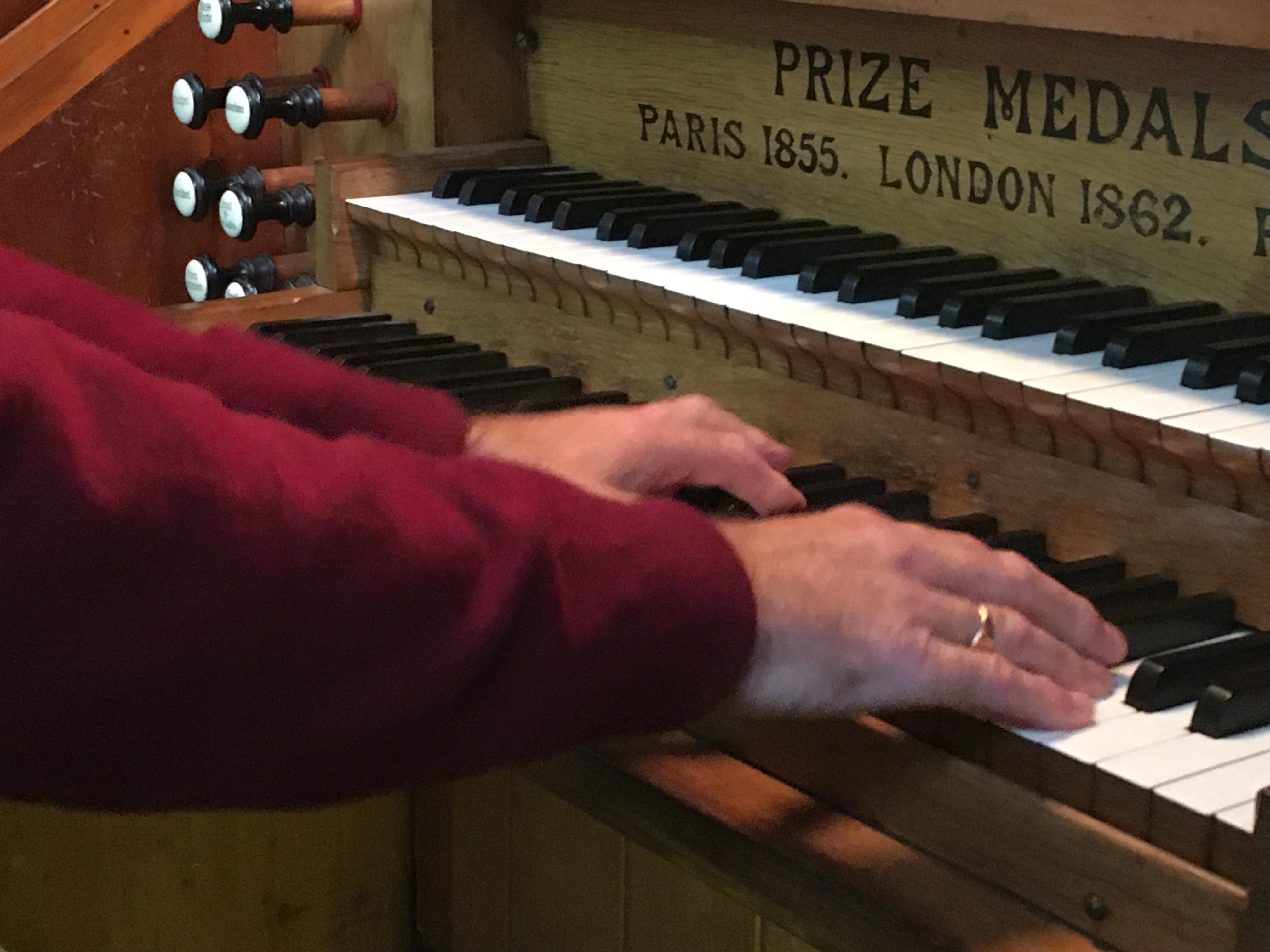CHARLTON'S HISTORIC ORGAN
The Bevington Organ
The London based firm founded by Henry Bevington in 1794 became one of the most prolific organ builders of the Victorian era. Many Bevington organs can be found overseas as far away as Australia whilst one of their most notable British examples is the large instrument in the Church of St Martin in the Fields dating from 1854. However, they also produced over two thousand more modest organs still in use in country churches today and in this respect the Charlton instrument is quite typical of their output with a specification that seems to have been somewhat standardised for their smaller two manual designs. Nevertheless, the quality of the instrument should not be underestimated. Bevington pipework is always highly regarded and its fine tone here is beautifully enhanced by the superb acoustics of the Charlton building so that the overall effect and versatility of the organ often appears to be well beyond that which would normally be possible within the confines of just a few speaking stops.
The Bevington organ predates the present building opened in 1893 and was one of the fixtures brought to the new church from the old Charlton Chapel, probably having been built for it originally circa 1870. Evidence on the original Victorian console certainly supports this as in addition to displaying the maker’s name the casework immediately above the keyboards is inscribed with the words ‘Prize Medals Paris 1855 London 1862 Paris 1867’ in proud celebration of the recognition the work of Bevington & Sons achieved at the first three of the many international exhibitions of inventions which sprang up in the nineteenth century after the Great Exhibition of 1851. A brass plaque fixed on the case above the console records that the organ was restored in December 1955 in memory of Stephen John and Elizabeth Agnes Knott who were for many years faithful members of the Charlton congregation and a second plaque this time on the keyboard lid records that the instrument was restored in their memory again in April 1984.
Whilst the 1955 restoration preserved the original specification of the instrument the work in 1984 which was also carried out by F.H. Browne & Sons of Canterbury made some tonal changes to the Victorian design. The first of these was to add a new three rank Mixture to the Swell to give the organ the lively brightness it had previously lacked and to make way for this on the existing soundboard within the swell box one of the original stops had to be removed. The stop lost was a Bell Gamba 8’ which like the Lieblich Gedact 8’ remaining ran from just Tenor C up with both ranks sharing the twelve pipes of the Stop Bass 8’ which draws separately to provide their lowest octave, a common space and expense saving device in nineteenth century organs. The second alteration was to the Pedal which whilst being typical in having just the solitary Bourdon stop found in countless small instruments was more unusual in retaining at so late a date a straight pedalboard with a compass of only 25 notes, CCC – C. The restoration saw the installation of a modern radiating and concave pedalboard with the now customary compass of 30 notes, CCC – F and at the same time the Bourdon rank was extended up to provide a unit of 42 pipes with electric action from which was derived not only the extra notes required at 16’ pitch but also a new Bass Flute 8’ to bring a little more independent definition to the pedal line. Both of these changes were very much in keeping with those made to many other older instruments over the past sixty years to allow them to give better account of the classical organ repertoire but at the same time the Charlton organ still kept most of its Victorian features. Amongst these are the unconventional layout of the drawstops with their slightly archaic nomenclature and the ‘Trigger’ pedal positioned to the right of the pedalboard which controls the swell shutters. Even the pump handle used to operate the bellows and provide the wind supply before an electric blower was installed sometime in the last century has been preserved so as a 150 year old instrument retaining much of its period character the Charlton organ now begins to assume some antiquarian interest.
The organ has two manuals and pedals and contains 546 pipes. There are ten speaking stops and three couplers making a total of thirteen registers. All the ranks are of metal except the Great Claribel 8’ and Pedal Bourdon 16’ and Bass Flute 8’ which are of wood.
Specification
Built by Bevington & Sons, Soho, London, circa 1870
Restored by F.H. Browne & Sons, Canterbury, 1955 and 1984
Great Swell (enclosed)
Open Diapason 8 Stop Bass 8
Claribel 8 Lieblich Gedact 8
Principal 4 Flute Harmonic 4
Swell to Great Mixture 15.19.22 3 Ranks
Cornopean 8
Pedal
Bourdon 16 Compass of Manuals CC – g3, 56 notes
Bass Flute 8 Compass of Pedals CCC – F, 30 notes
Great to Pedals ‘Trigger’ Swell Pedal
Swell to Pedals Mechanical Action to Manuals
Electric Action to Pedals
Drawstop Console





